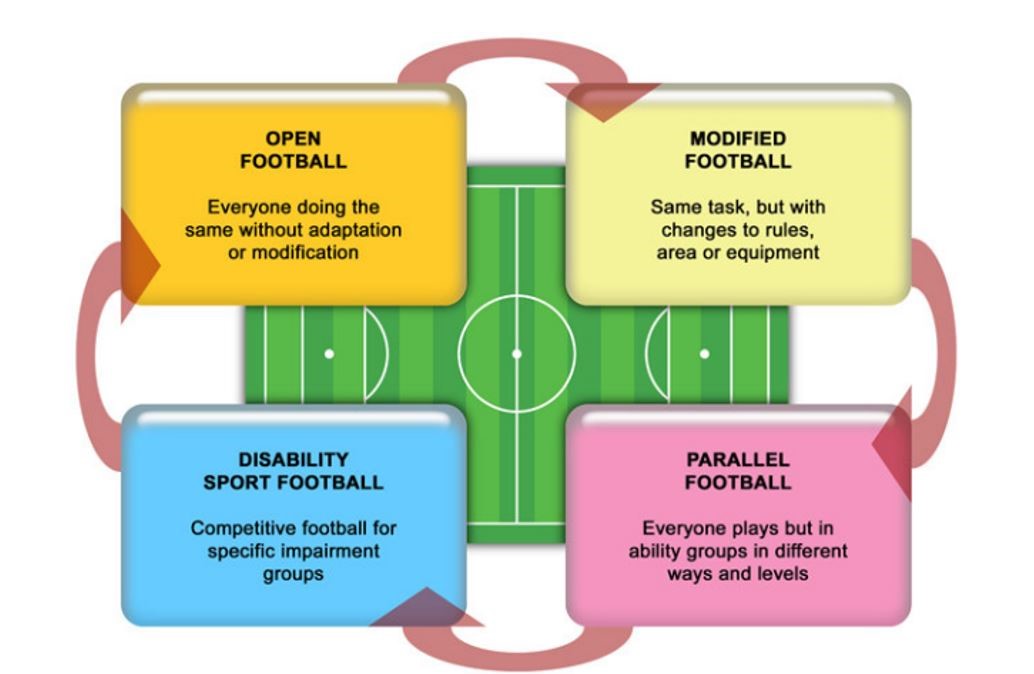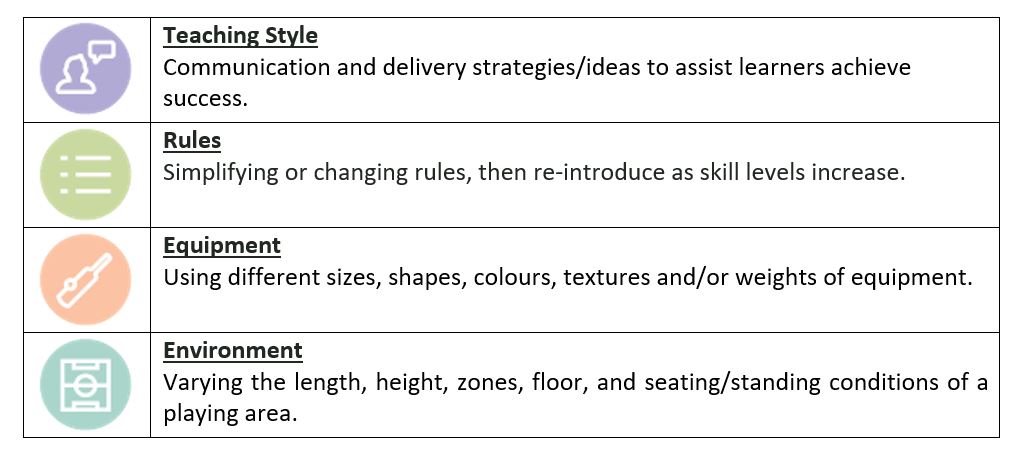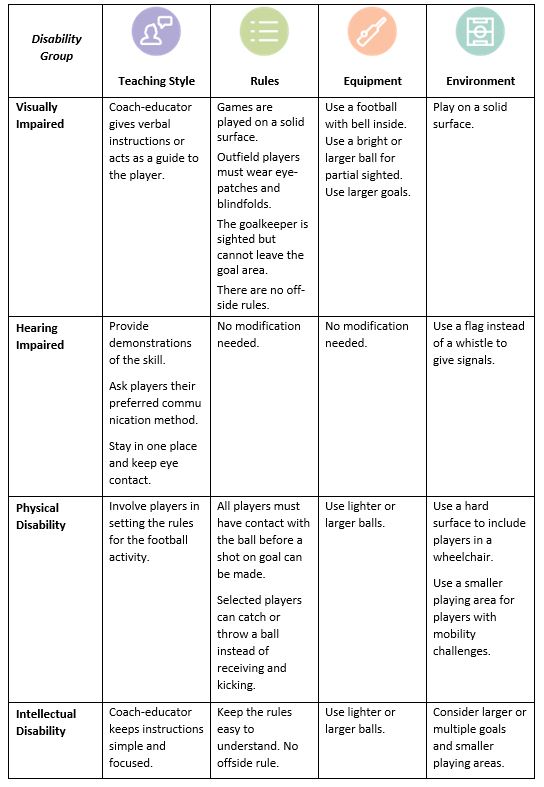Football for Schools is an inclusive programme that aims to reach children and young people of all abilities and backgrounds. Coach-educators are encouraged to adapt sessions to meet the learning needs and abilities of individual players and make special efforts to include children and young people previously marginalised from football.
No child or young person should be left behind regardless of their ability, race, ethnicity, gender, sexual orientation, language, culture, or religion.
Coach-educators should ensure all players feel welcome and receive equal attention when taking part in Football for Schools sessions. This requires educators to be flexible, responsive, and supportive when planning and delivering Football for Schools sessions to cater for the diverse needs of all learners.
Practices should be developed to support and encourage all learners to engage in Football for Schools addressing barriers such as: dress options; religious-cultural dispositions; parental discouragement; inadequate changing facilities; cost of kit; body image; and football’s image.


